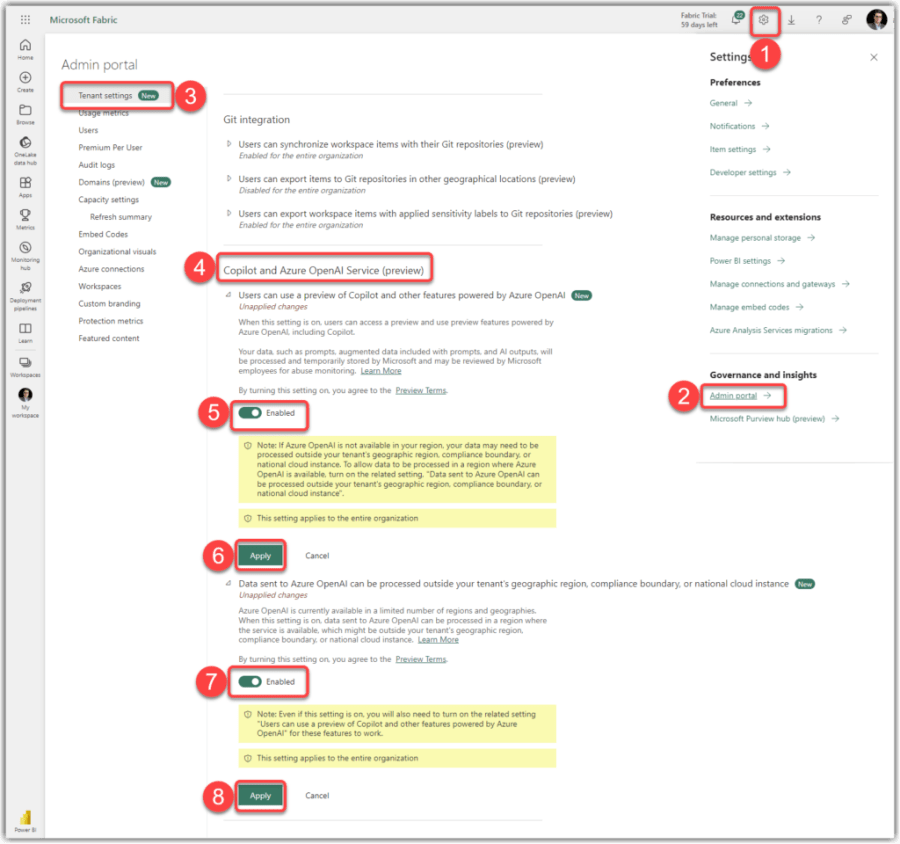
UPDATE 16 Sep 2024
I have published a new blog explaining how to resolve the issue of Capacity Admins disappering. Check it out here.
NOTE
This method uses the Create or Update a Resource action. This action uses PUT method which messes up with capacity admin settings on the Fabric Admin portal. This is stated by Kevin and later by Wiroj in the comments section. The REST API to scale or down the Fabric Capacity is as follows:
patch https://management.azure.com/subscriptions/{subscriptionId}/resourceGroups/{resourceGroup}/providers/Microsoft.Fabric/capacities/{capacityName}?api-version=2023-11-01If you run the preceding API using PATCH method, you do not need to have your capacity running. In other words, you can run the API even when the capacity is paused. I will post a new blog explaining this but for now, I hope the information provided here is helpful.
Read more in my comment and Michael’s about this topic.
In a previous post I explained how to manage the capacity costs of a Fabric F capacity (under Pay-As-You-Go pricing model) using Logic Apps to Suspend and Resume it.
A customer who read my previous blog asked me “Can we use a similar method to scale up and down before and after specific workloads?”. This blog post is to answer exactly that.
I want to make some important points clear first and before we dig deeper into the solution:
- The method described in this post works with Fabric F SKUs under Pay-As-You-Go pricing model.
- If you have a Power BI Premium capacity, then this method is not valid for your case. But you might be interested in the autoscale option for Power BI Premium capacities.
- Depending on your current workload, scaling down may not work due to resource unavailability.
- Depending on your workload, this method may take a while to go through.
- You need to be either a Capacity Admin or a Fabric Admin to successfully implement this method.
- This method works based on user authentication, however, you may want to use Service Principal or Manage Identity which require more effort but could be a more desirable method in many scenarios.
- This post explains a very basic scenario, you’re welcome to scale it to your specific needs.
- You can consider this post as a continuation of the previous post. So if you are unsure you correctly understand what this blog is trying to explain, then I suggest you read my previous post first where I explain the Logic Apps implementation in more detail.
The Problem
I have an F Fabric capacity and I want to upscale it to an upper tier between the pick-time from 8 AM to 12 PM local time, then downscale it to its original tier.
The Solution
There are many ways to do this including using Azure Resource Manager APIs, Manage Azure Resources in PowerShell, or using Azure Resource Manager connector that can be used on Azure Logic Apps, Power Automate Premium, and Power Apps Premium. This post explores the use of Azure Resource Manager connectors in Azure Logic Apps. With that, let’s begin.
- On Azure Portal, search for Logic apps
- Select the Logic Apps service

- Click the Add button
- Pick a Subscription from the list
- Pick a Resource Group from the list or create a new one
- Enter the Logic App name
- Select the Region from the list
- Select No if you do not require to Enable log analytics
- Select Consumption from the Plan type
- Click the Review + create button

- Click the Create button





